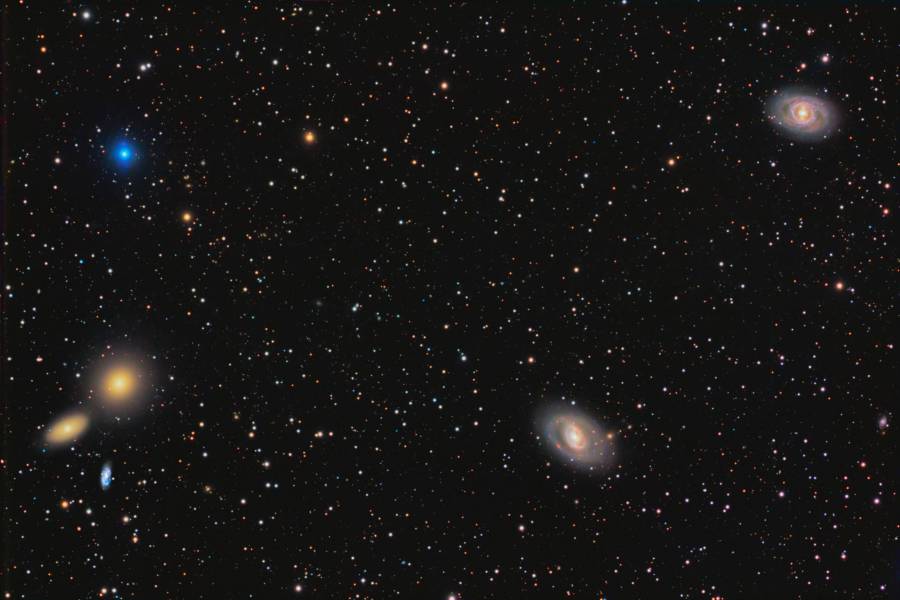A Quintet of Galaxies in Leo |
 |
| This was an attempt to capture "another Trio in
Leo", but the number of interesting galaxies (not counting the
more distant ones in the background) in this images goes up to
at least five, so I'm calling this the Quintet in Leo. If we are just counting Messier objects, this picture does represent a Trio in Leo 2, comprising M95, M96 and M105. However, the classic Trio only counts two Messiers, so this remains a quintet. Hover over the image to see object identification. Click on either image to see a larger picture. I'm a bit puzzled by the designation of the labeled NGC galaxies, as even my planetarium software (TheSkyX) gives these galaxies two catalog numbers (hence the second designation with a "?"). A couple of months after I shot this image, a supernova went off in M95. One other point of note: the constellation Leo happens to lie on the same plane as our Solar System, which means it also lies in the same area as the asteroid belt. Long story short, it is almost certain to catch an asteroid, or two or three or four, when imaging targets in this part of the sky. Here is a composite of my luminance data for this image, stacked and processed to show the asteroids (the streaks in the image). Please ignore the longest somewhat blurred streak going down along the right third of the image; that is a processing artifact. How many asteroid streaks can you see? |
| Constellation: Leo |
| When Visible: Feburary - July |
| Distance: 38 Million Light-years (M95), 31 Million Light-years (M96), 32 Million Light-years (M105) |
| Date: Two nights In February 2012 |
| Location: Rancho Hidalgo, New Mexico |
| Exposure Details: L: 30 x 10 Minutes binned 1x1 R: 12 x 10 Minutes binned 1x1 G: 12 x 10 Minutes binned 1x1 B: 12 x 10 Minutes binned 1x1 11 Hours total exposure time |
| Equipment Used: Takahashi TOA-130F on an Astro-Physics AP1200GTO mount. SBIG STL-6303E camera with FW8-STL filter wheel and Astrodon LRGB and narrowband filters. Robofocus focuser and Astrodon Takometer rotator. |
| Acquisition Software : MaximDL 5, TheSky6, CCDAutopilot 4, FocusMax, Takometer Controller |
| Processing Software: MaximDL, Photoshop CS, Carboni Actions, Croman GradientXterminator, IrFanView |
